Good morning, good mo-o-orning!
(no...I didn't talk the whole night through!) But oh what a swell Easter Saturday morning this is!
(OK so I’ve already lost the plot! Good morning…from Singin’ in the Rain by Debbie Reynolds, Donald O'Connor, and Gene Kelly, 1952…an old favourite! Nor was I at a swell party last night, Bing Crosby, High Society, 1956…both produced way before my time and yet…!) How distracting….!!
Good morning everyone,
I’ve watered and I’ve picked and now I’m hell bent on getting this post to you as quickly as possible, so that for those who do have a gardening weekend planned, there are some tips at hand to use as a guide at this pivotal moment in the season. (And for non-gardeners I’ll get to some other things towards the bottom!)
So to pick up where I left off yesterday, which pretty much covered the tasks of a fortnight ago…the jobs I carried out last weekend are as relevant for this, and next…so please don’t panic. I haven’t yet completed them either, as you will see…so we’re all still on track!
I’m going to begin here, because I do truly urge you to try and knock something up for yourselves along similar lines as quick as you can. Many moons ago, during my first veg growing years and still a newbie to growing broad beans, I was bitterly disappointed when…in one of those inevitable huge gusts of spring wind, I lost the lot. That scenario taught me a big lesson…as although they’d been ‘staked’, that method I’d used was inappropriate.
Broad beans (I always grow the variety Aquadulce) grow tall. Their fragile stems (similar to the stems of Dahlias) are hollow and so tying them to a stake is not a good idea, as those stems are too weak…should they pull against the string, it’s likely to cut through the stem.
My solution? I began way back then, to make these ‘broad bean boxes’. These days I use 4 x tomato stakes for the uprights, and cut sections of bamboo (from pieces I’ve previously used for tunnels or wigwams that inevitably rot in the ground, so I re-use and re-use all the still useful parts until they are usable no more).
This way, as the beans put on their upright growth, they are contained within the box, which allows them to rock back and forth in the wind, supported by the frame and each other.
You will be grateful, in a few months time, that you put the extra effort in now. When those boxes are bulging with tall, healthy stems of highly fragrant bean flowers, awash with bees and glowing in the late winter sun, I promise it will put a smile on your face!
Once the frame is complete, I sow five seeds per box, the way the number five is displayed on a dice. This number seems to work from a self-supporting perspective. And now…I wait. The waiting is the most nerve-wracking part of all! I soak bean seeds before sowing (some peeps soak their seed overnight…I’m inclined to do so for just a few hours…I think you can just as easily cause them to rot, as to help germination…I guess I’m just hedging my bets!). And then…you’re not meant to water them until they germinate. I find this difficult! In the raised beds in the main part of the garden, the soil is inclined to dry out. So again…hedging my bets…I give them just a light water!
So now…on the bean front…I’m feeling slightly anxious! But at least I have two boxes (on the guild side of the kitchen garden) complete. What I have yet to do, because on the traditional side of the garden I have a situation that’s holding me back…is to build my main broad bean structure…which is the equivalent of 4 of these boxes joined together. This is where I mean…don’t panic. I intend to get mine done in the next couple of weeks.
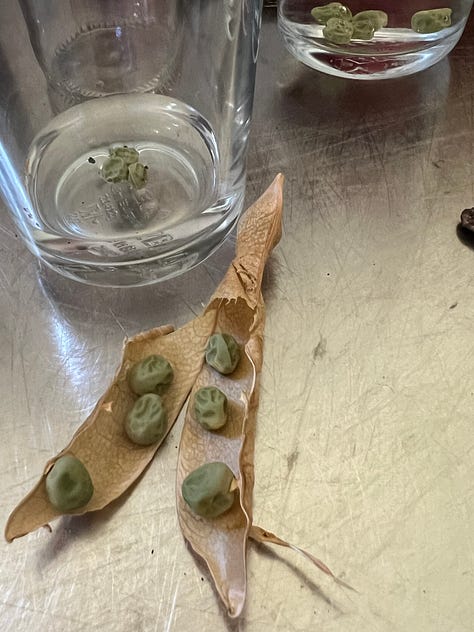
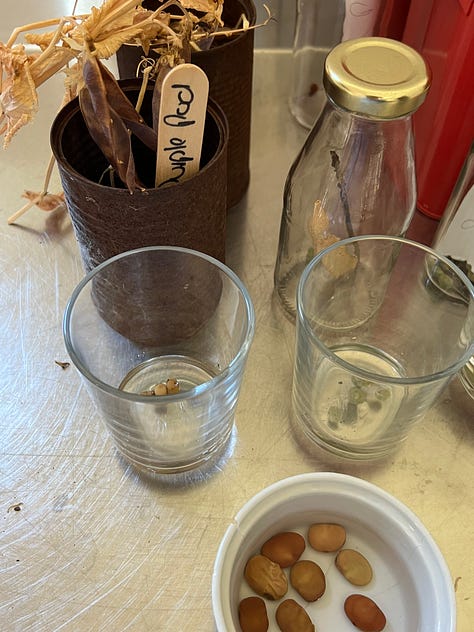
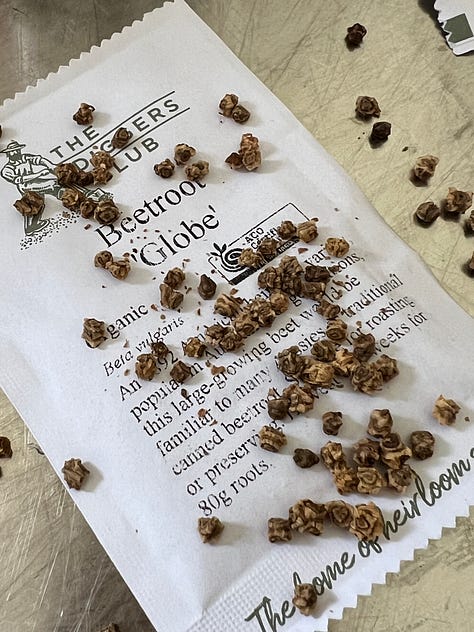
Whilst on the topic of seed sowing, I also soaked (and sowed) pea and beetroot seed.
I’ve been collecting my own pea seeds for years…the Purple Podded for what must be 30 years (as I grew those in the first iteration of the kitchen garden and they were very much a part of my garden learning). The Telephone was a later find, a tall growing podding pea with the sweetest little peas you can imagine…they rarely make it to the cooking stage as everyone seems to eat them on the spot! The Sugar Snap ‘Sugar Ann’ was also a later find and I find perhaps the best and most sensible cropper of all. If I happen to miss picking at the perfect ‘sugar snap’ stage, they develop into a good podding pea. Whilst the Golden Pod, that produces such beautiful double mauve/purple flowers that contrast with dripping golden yellow pods…is not so flavoursome.
I’ve sown the pea seeds into both a copper ring (I’ll come back to those…I wish I had literally dozens but I can’t afford them!) as well as at the base of a couple of the uprights that make the wigwam frame. The purpose of the copper ring (hinged…I commissioned them to be made by a local coppersmith and for awhile had a handful to sell) is to keep the wood slaters away from germinating seed. It’s a way of excluding mulch, that’s inclined to bring slaters, and gives those newly hatching seedlings the best chance of survival…as slugs will also not cross the copper barrier. Today, I’m at the same nail-biting stage with those first pea sowings as I am with the broad beans! Again…I haven’t yet begun to sow my peas on the traditional side of the garden…for the same reason I have yet to sow the broad bean seeds! So again…don’t panic…I haven’t yet completed this either!
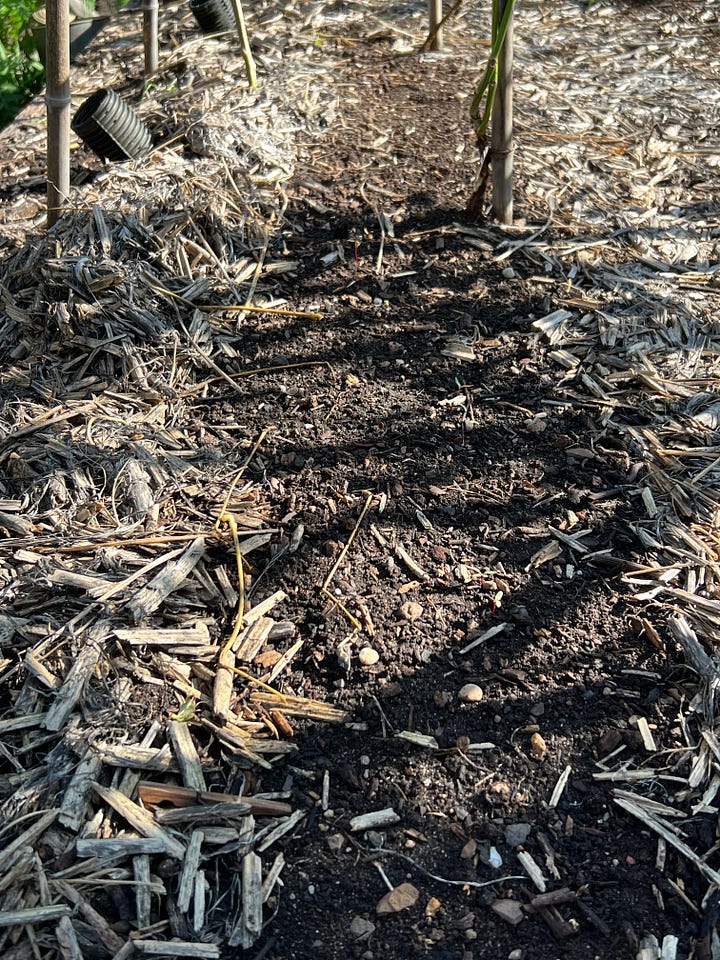

The Beetroot seed, I’m inclined to buy in. It takes a really long time for beetroot to flower and set seed, so I usually add in a packet of beetroot seed to any mail order purchase. For all the fancy (even if they are heritage) ones available, to be honest I enjoy eating the familiar, deep burgundy coloured ones best…so usually opt for Globe or Bull’s Blood. What I will say is that I opt to sow beetroot from seed, as opposed to planting seedlings. For the cost of a packet of seeds…I’d rather sow many and thin them out (eating all the leaves of those I thin…they’re a valuable crop in themselves). Something I won’t do is buy those wretched seeds ‘on a tape’ that are spaced out in a single row! I like to sow in a ‘swathe’ all higgeldy-piggeldy…it makes them easy to ‘thin’ and as they grow, they develop into a generous ‘wide’ row, rather than a ‘skinny’ one…which (to my eye anyway!) looks more bountiful and generous!
And how thrilling…germination here is already underway! Now to decide if they need some protection! I’ll pop out some Multiguard snail pellets at least…but hopefully these little ones will otherwise be able to fend for themselves.
Whilst still on the topic of seed, of course not all plants require staking. On the traditional side of the garden, where I mostly plant in neat and tidy, straight rows, as with the beetroot above, it’s easy to see where I’ve sown. On the guild side of the garden though, where everything is mixed and muddled (this primary reason is meant to confuse the pests…I have my doubts but have found many benefits for growing in this relaxed manner over the years that you’ll glean more and more of as we go forward), it’s not so easy to remember where I sow seed that isn’t a variety that requires a structure. I’ve explained how I allow so many varieties to ‘self-sow’ on this side of the garden, and much of the way I garden on this side is to do with ‘weeding out’ or ‘foraging’. But amongst that, I also like to sow other veg and herb varieties…and I need to remember where they are!
So…what seems like forever ago now, I hatched a plan. From the beginning I always saved the tall, straight, fruit tree prunings which are inclined to be attractive in their own right. I love to keep them in bundles, tied up with string…each has its own character and colour…the apple tending to grey, the quince a russet, the peach, pear, apricot, plum all various shades between.
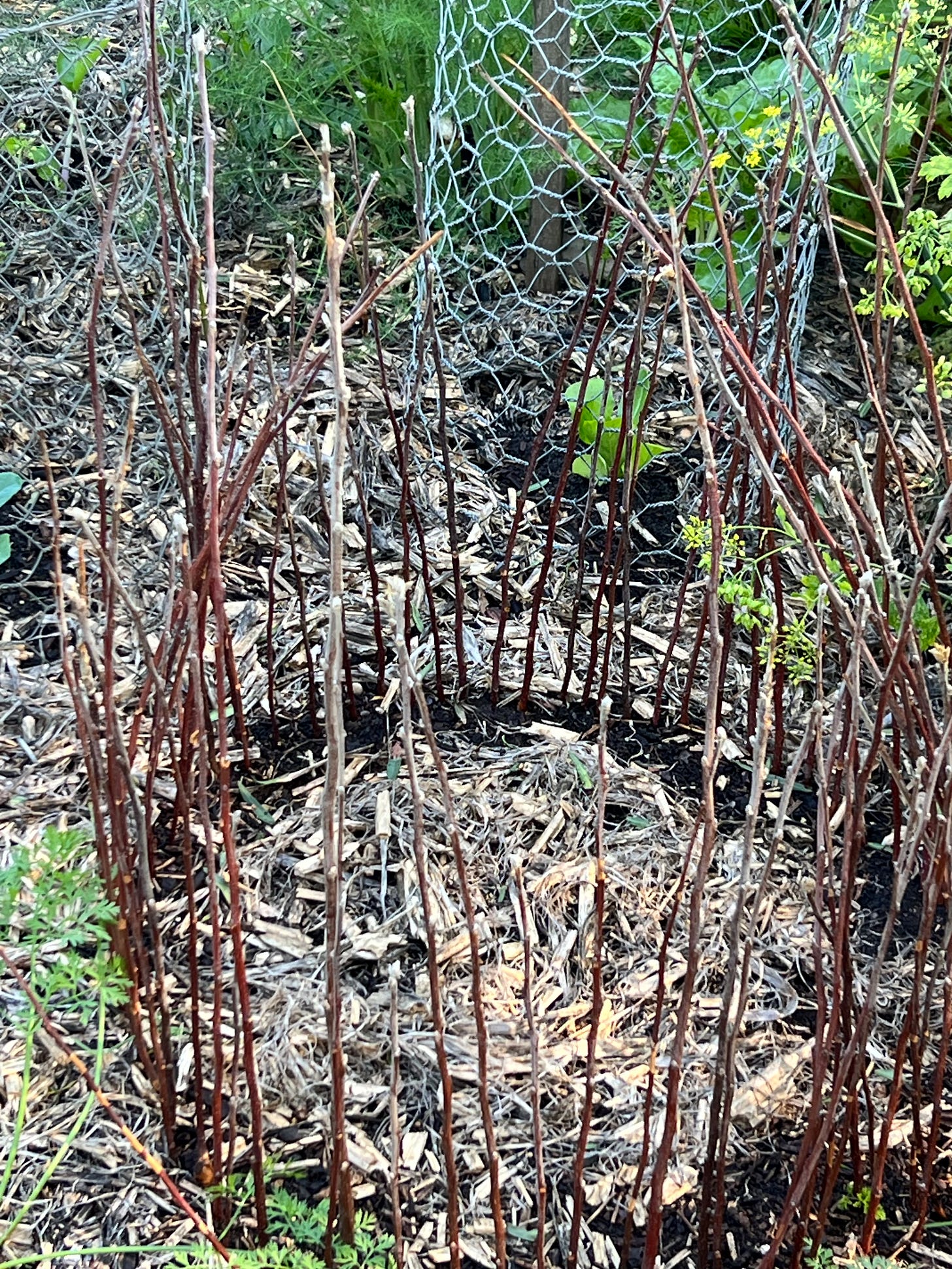
It’s at this time of year (and again at the time of the spring rotation) that I put them to good use…in delineating areas of seed sowing. Whilst indicating to me just where I’ve sown seed, it’s a vague attempt at stopping birds from eating the seed I’ve sown but also a way of adding form and interest to the guild beds. Sometimes I make a circle, other times I mark a kind of ‘river’. I just see how the mood takes me and work around what’s already planted, whilst also taking into account the seed I’m sowing…will I want to be able to reach and pick each day? Or will it stay for awhile without needing access? Will I allow some of it to flower later in the season? What will that look like?
I’ve only just begun this part of the planting/sowing/creating for this season. Each move I make now, will affect the vision in the spring, as much as what we’ll eat along the way, and the likely bumper harvest months down the track.
There’s a lot to consider. And the process of it all brings me enormous joy!
The first sowing in this style, this season, is of coriander. I didn’t soak the seed…perhaps I should have. I find coriander to be extremely temperamental, but when it works, it works…and how I’m looking forward to eating those first tender new leaves!
As the prep and planting of the kitchen garden continues to make slow progress, so the bounty of the last season continues to make its way to the kitchen. The Trombonchino zucchinis continue to send out their long, pale green fruit, I’m still working my way through the onion harvest that’s hanging in bunches from its dried leaves down at the potting shed, and although the potatoes may now be ‘old’ rather than new, I’m still digging them up in quantities.
This haul made its way into a lunch for a garden visit of 40 peeps last week! There were enough for them to come back for a second helping…phew…(the friendly ‘image gallery selector’ seems to have gone on strike which is rather annoying…sorry for the run of large images…apparently this post is already way too long!
Great mountains of soft lettuce leaves are filling our plates whenever we want them just now too…thanks to continued successional sowing, although I’m always worried there’s going to be a gap to fill…and if there’s something I hate to have to buy…it’s lettuce leaves. We probably enjoy a leaf salad three to four times a week…to accompany either pasta, risotto, an omelette or…one other dinner.
This bunch of rhubarb will be in our Easter Sunday breakfast bowls. (So annoying the gallery won’t load…I’ll pop the sequence of rhubarb images instead, onto instagram for you to see!
I cooked this bundle up via the most simple method of all: remove leaves and base of stalk, wash the sticks, chop into short lengths, add to a large saucepan. Sprinkle with a good tablespoon of rapadura sugar, add a hefty sprinkle of cinnamon, nutmeg and a few cardamom pods. Pop the lid on and cook ‘til it all ‘puffs up’. I know the elegant way is to bake it in the oven and keep the sections ‘whole’ but for breakfast, we like it puffed! Another reason to cook it this way at this time of the year, is that when I bake it, I tend to do so with orange zest and juice, and as our oranges are not yet in season…that version can wait (that’s also when we have rhubarb crumble and I’ll share that recipe then!).
The beans are fewer now, though I’m still collecting enough each day to add to my collection for a weekly helping to accompany one dinner, as well as an extra handful to freeze. By now, most of the pods that set are inclined to fill with a swelling internal seed before they have a chance to stretch into their lovely edible form, so their days are numbered. (And damn because how I was hoping to have enough for our upcoming workshop with Cade McConnell for his ‘green bean curry’!). Well…maybe…
I’m freezing as many as I can too, because Larry is inclined to announce mid-winter that he feels like eating beans! I’ve told him time and again that if he returns from the shops with beans out of season one more time…I’ll leave! I sometimes think I have more luck explaining the multitude of benefits to eating seasonal produce outside of these walls than in! Mid-winter is what dried beans are for (and I’ll save that for next week because drying Borlotti beans is another hot topic of the moment!).
I mentioned yesterday that most of the tall fennel stems are carrying heads of dried seed now, but there are always a few specimen plants that are completely out of kilter with the season, for which I’m enormously grateful. At this stage of the flower’s progression, the fresh fennel seeds make the most delicious pop of aniseed flavour on the tongue…and this evening, I’ll be scattering a few over those beans I picked this morning.
Yesterday I mentioned it was ‘I-spy-a-fig’ time…which it is! They’re not ripening in abundance, but one at a time…and one needs to go in search…and pick at just the right moment…as the weight of the fruit begins to pull the stalk downwards; and the fruit too, has just a slight droop (where yesterday it may have been more upright). Figs don’t ripen post-picking, so you need to time the plucking just right for the most luscious fig-eating experience! (I haven’t yet had time but am salivating at the prospect of reading Harriet Davidson’s words on The Fig, for her Substack A Journal by Harriet. (By the by, Harriet will be cooking recipes from Italian Coastal for our Twilight Supper event with author Amber Guinness here next Saturday…an exciting week of prep lies ahead!).
The essence, the deep figgy aroma…emanating from the leaves of the Figs just now is on full throttle, permeating the air all around, as with each passing day they dry and shrivel just a little more. Did you know that if you pick a fig leaf and allow it to dry…it will continue to scent the air for months to come? I have one on my bedside table.
Before I go (as you can imagine, there’s a lot to do outside!) I’d just like to mention the District Exhibits at the Sydney Royal Easter Show, because next week will be too late (the show wraps up on Tuesday). For a number of years now it’s been an absolute privilege to be one of the judges of the District Exhibit Displays. To be honest, I’m not quite sure about the idea of judging anything, but ‘tis how these things seem to work, with a good deal of criteria set to be met by each participant. From concept to final display, I know these works take teams of people…all of them incredibly skilled in their area of expertise, and at the same time, the growers they rely on are at the mercy of the weather…their produce, their crops that go to make the displays contingent upon the vagaries of whatever is thrown at them. Yet year after year, the displays delight us all, as they convey messages of the importance agriculture plays in all of our lives.
You know the ‘gallery’ isn’t going to let me post a raft of images so…you’ll just have to believe me when I say the colours and textures, the combinations of fruit, veg, pulse, seeds, fleece, cereal crops, preserves…the list goes on and on, that cover every millimetre to tell a story…are quite breathtaking. As a child, it was the delight of seeing the District Exhibits that drew me annually to the Easter Show, so you can imagine how passionate I am that they continue well into the future! Get to the show if you can…of course there are myriad other things to see…the show is such a Sydney tradition!
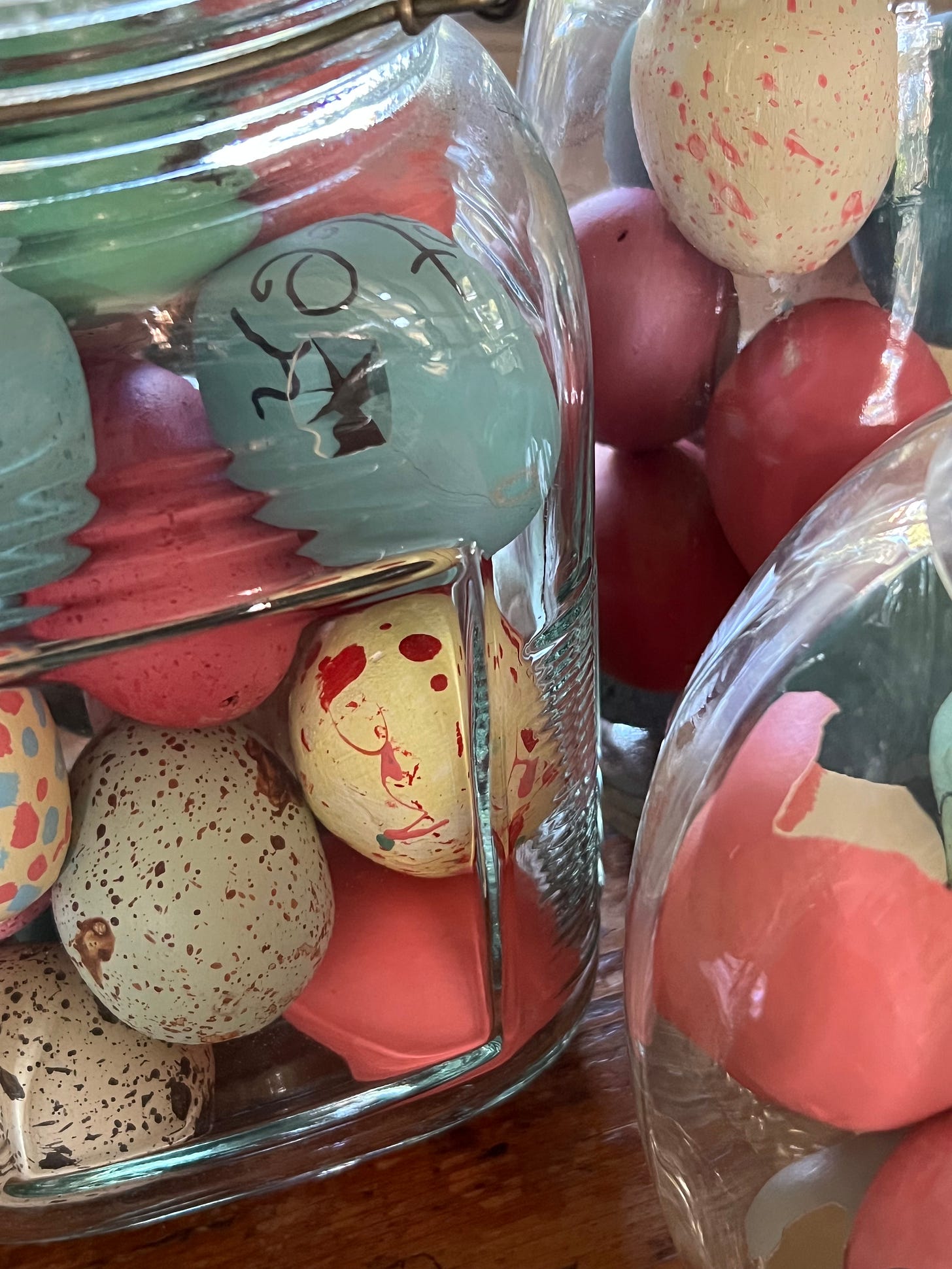
Well…that’s me over and out! Someone wants me to bake a cake…and I really do need to stretch my legs!
Have a wonderful Easter (and if you have any gardening questions, you know you can always send me an email via the website!). Happy gardening to those who are…(I also need to clean the potting shed…uggghhhh!!!!). Mickey x




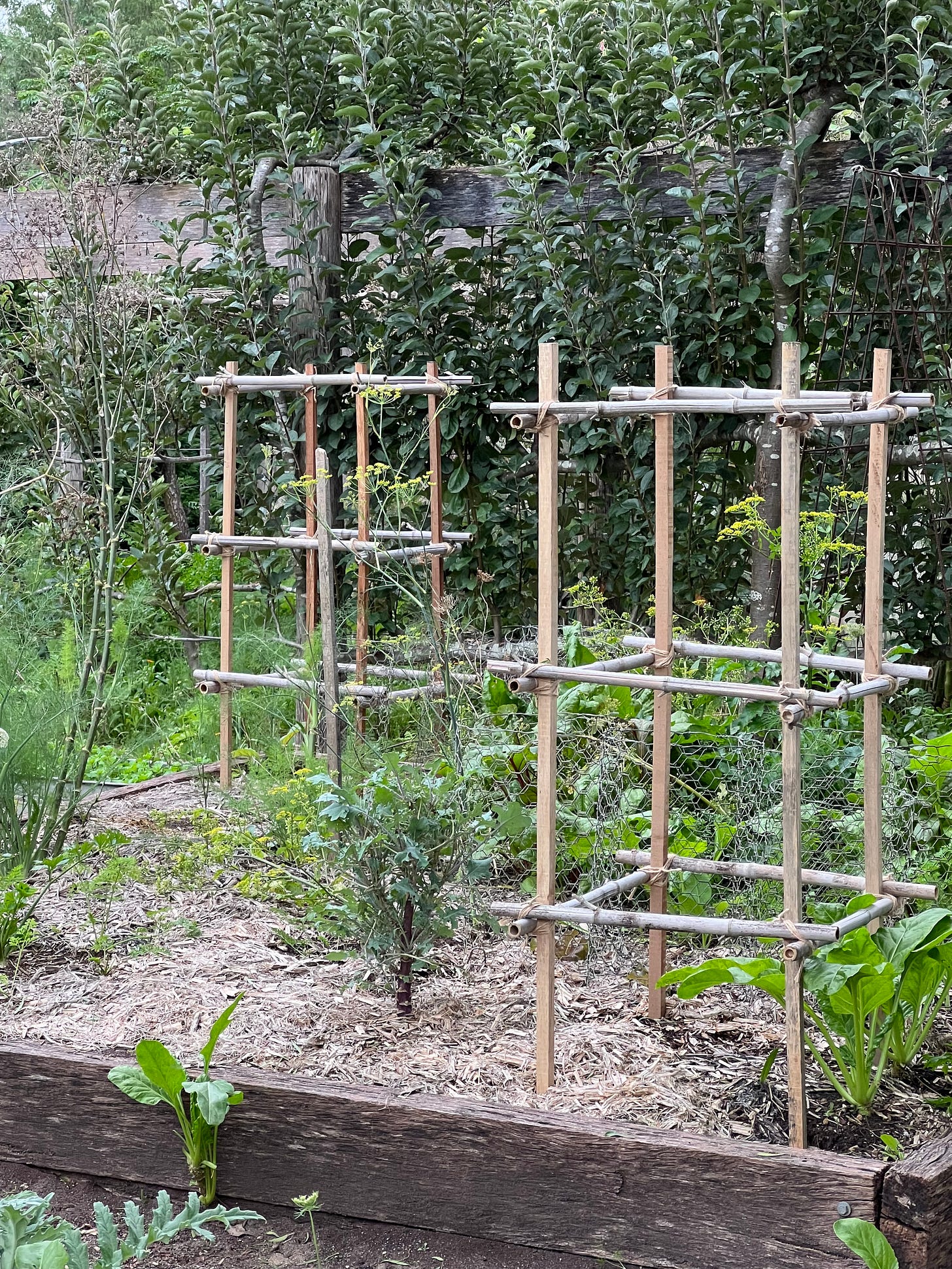
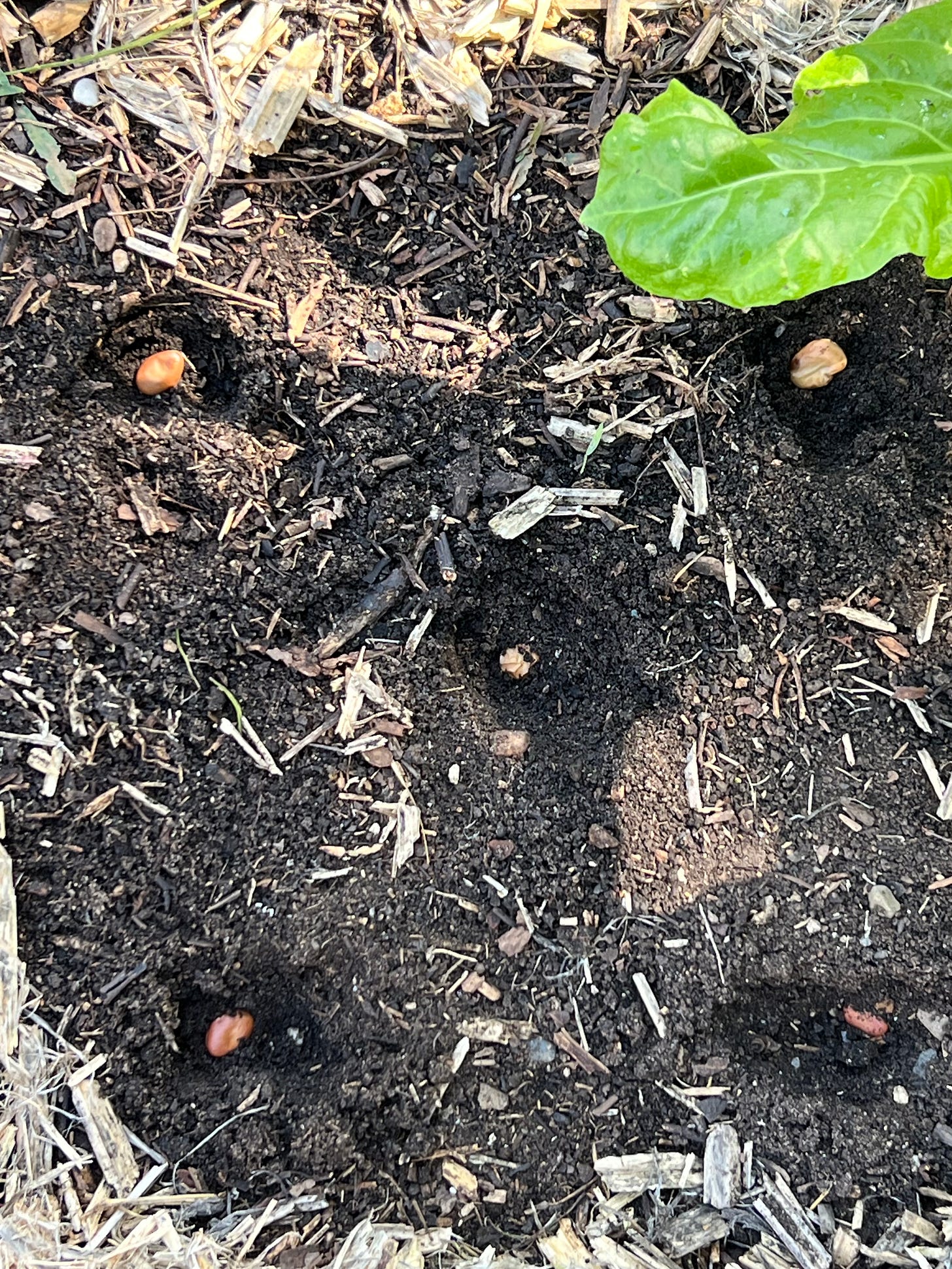
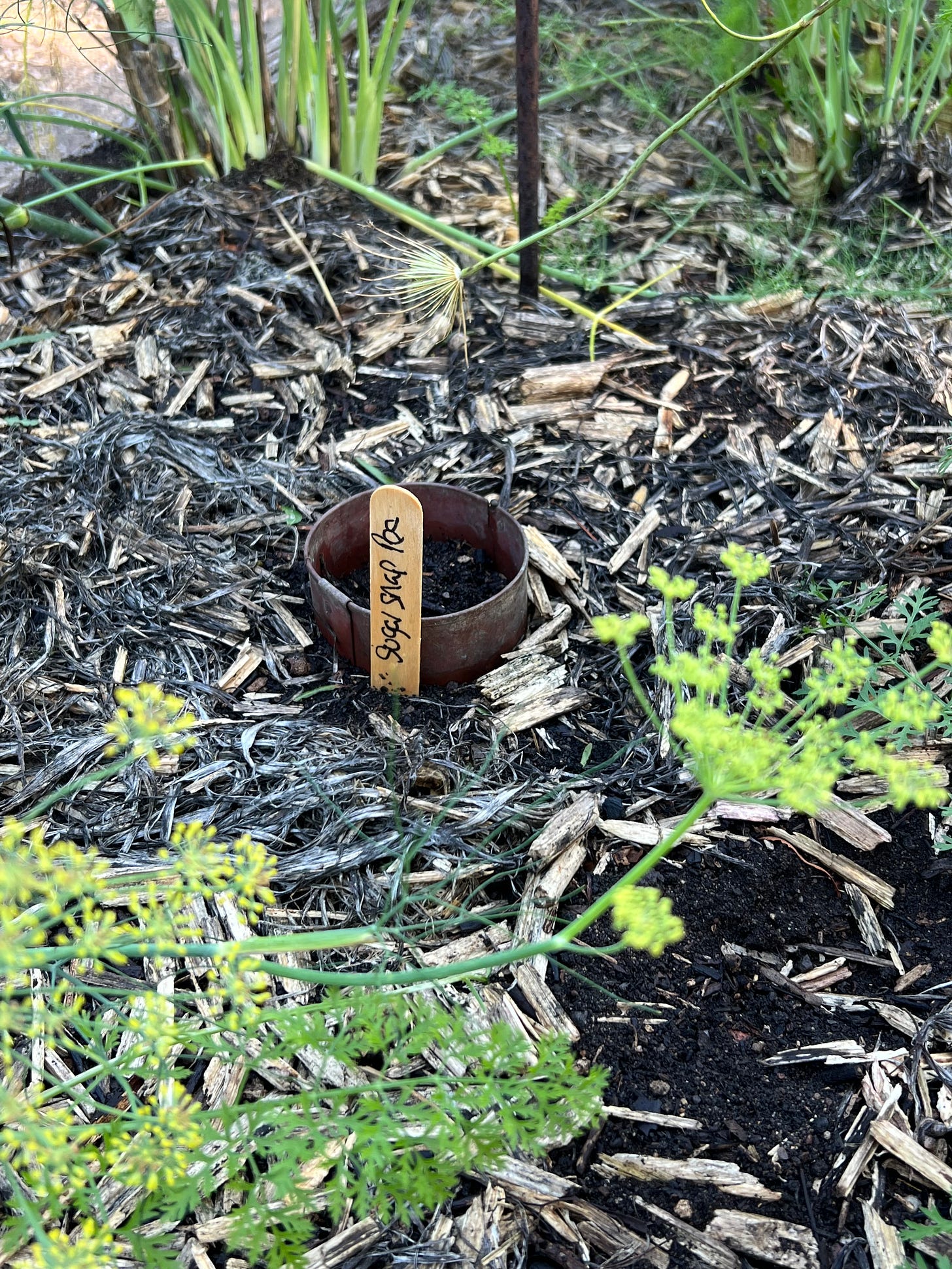
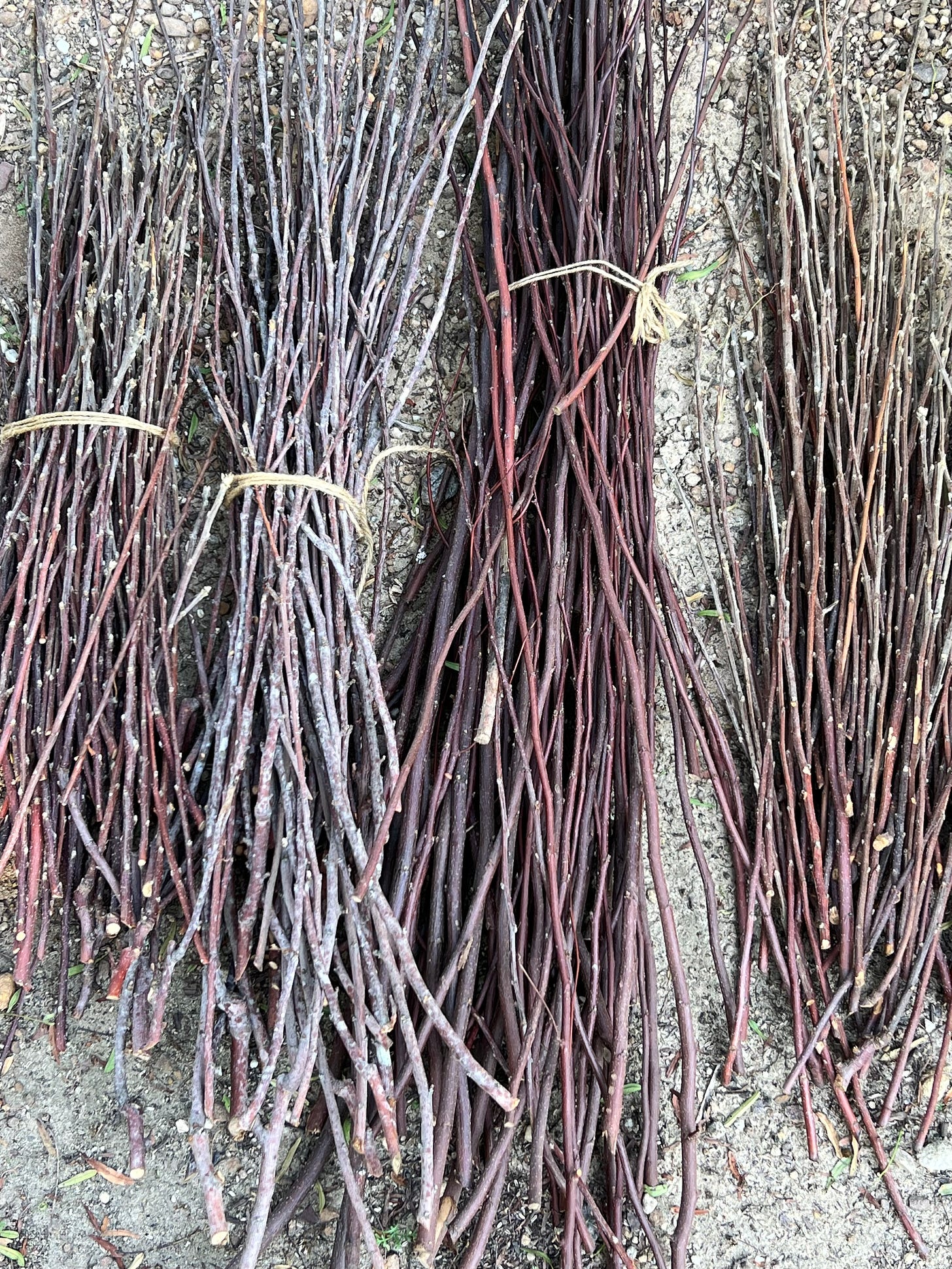
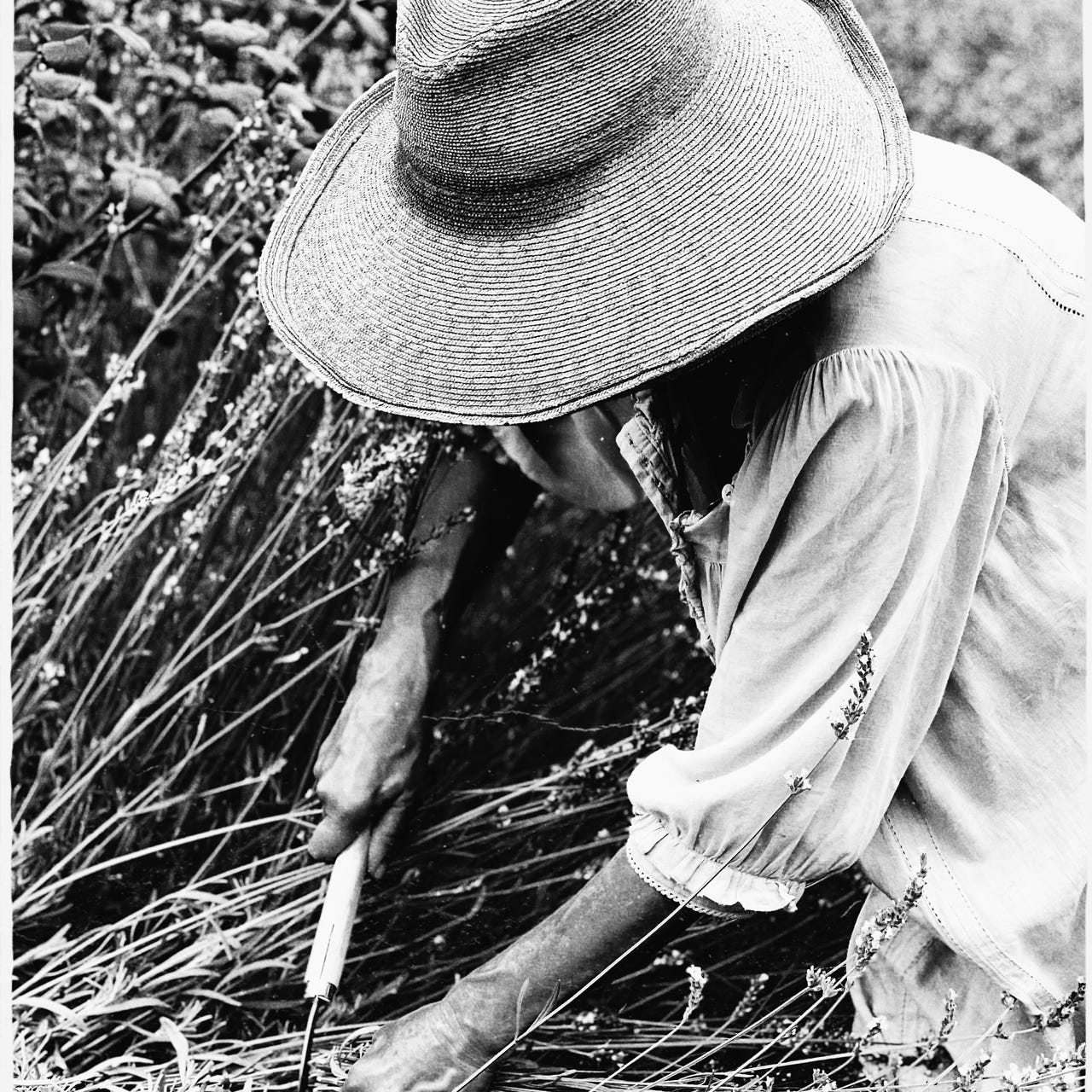

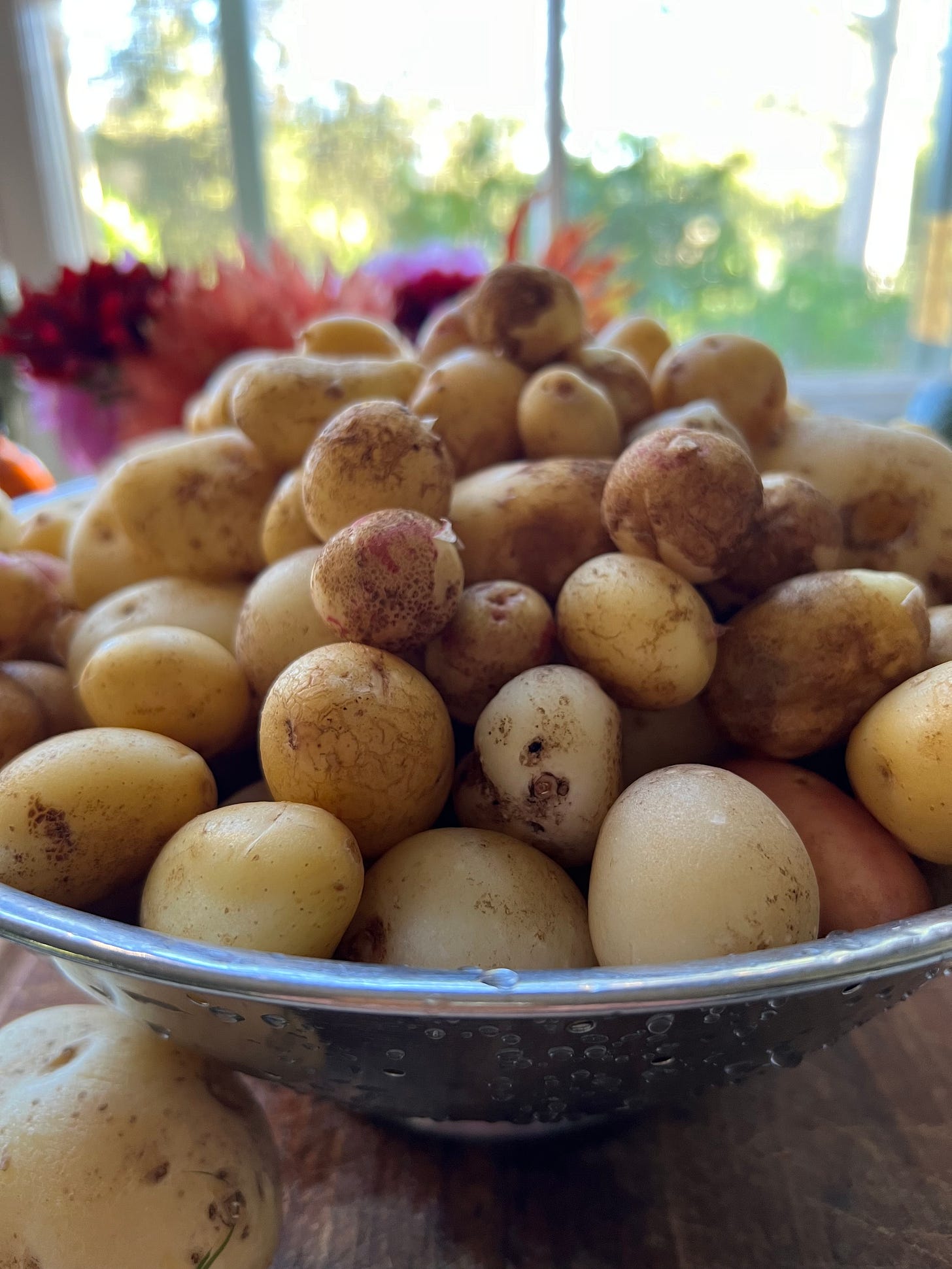
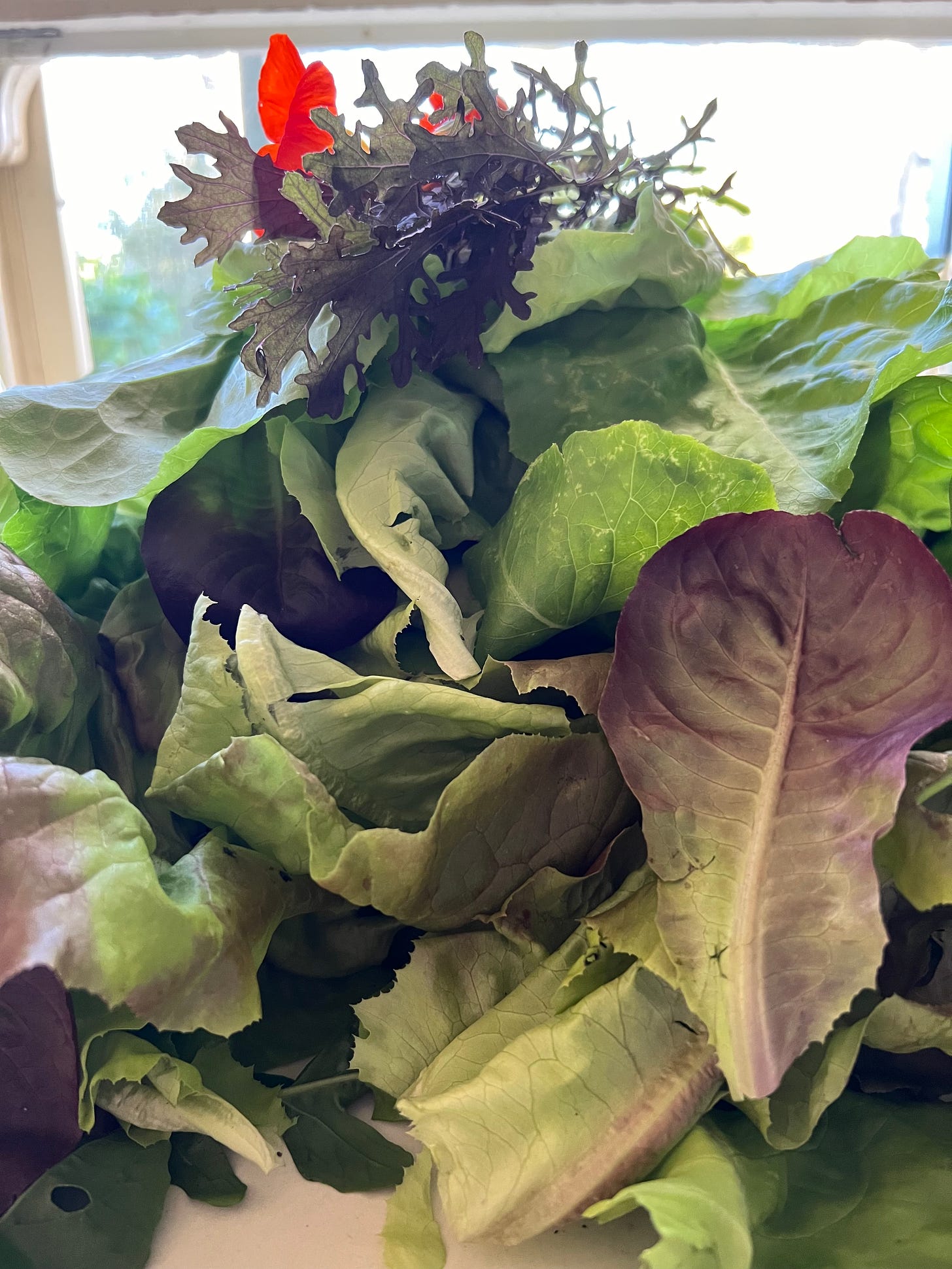
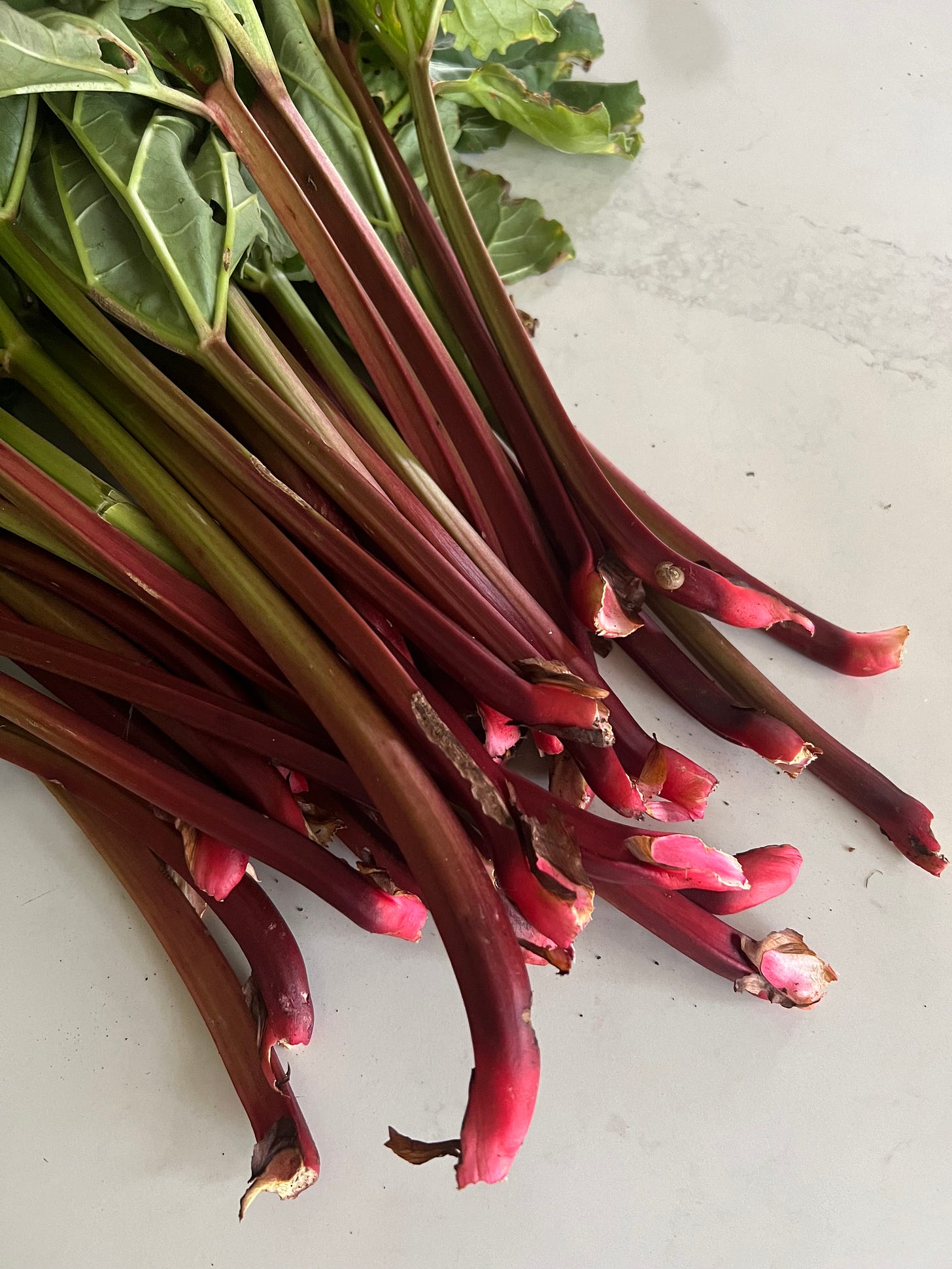
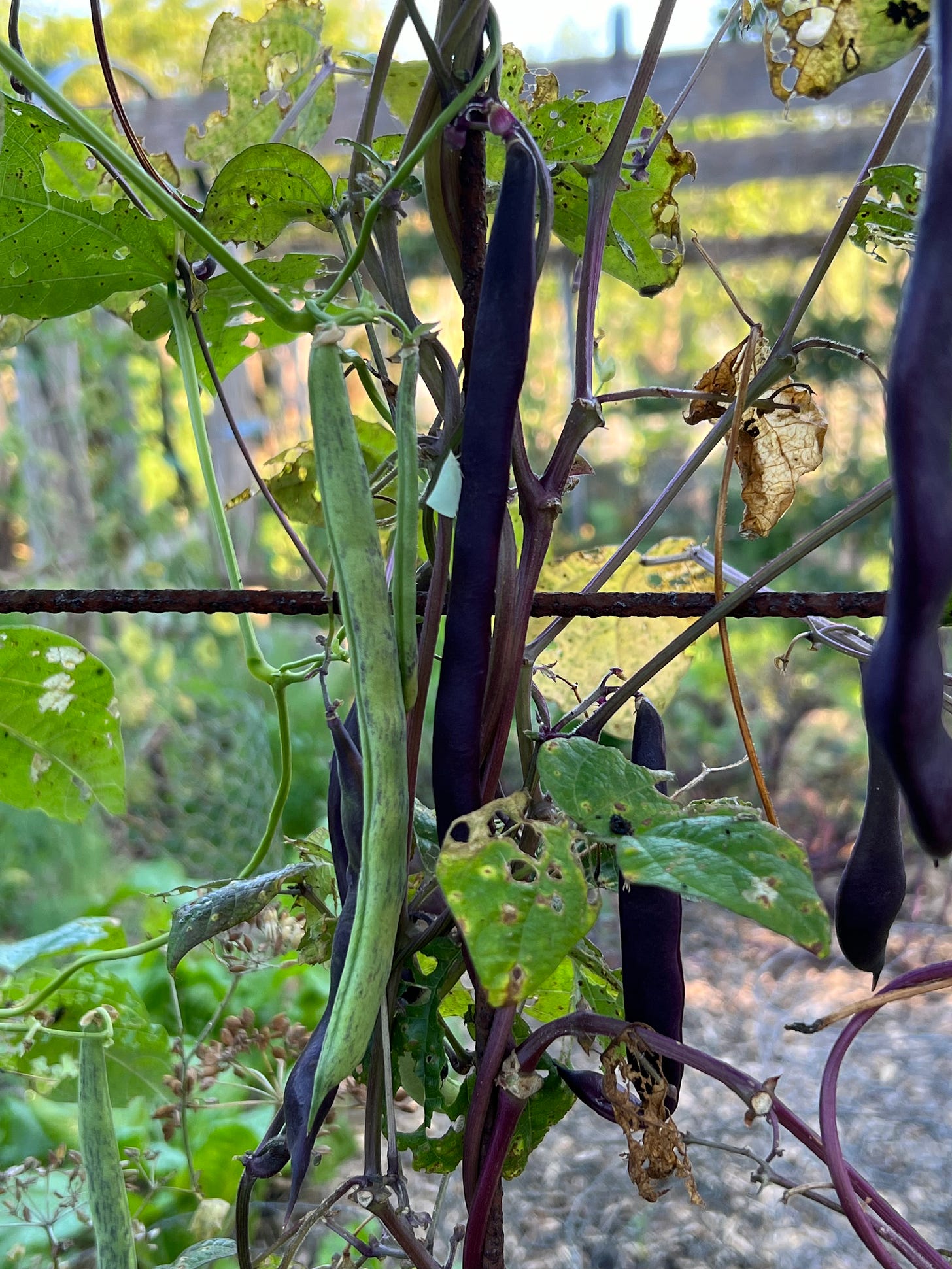


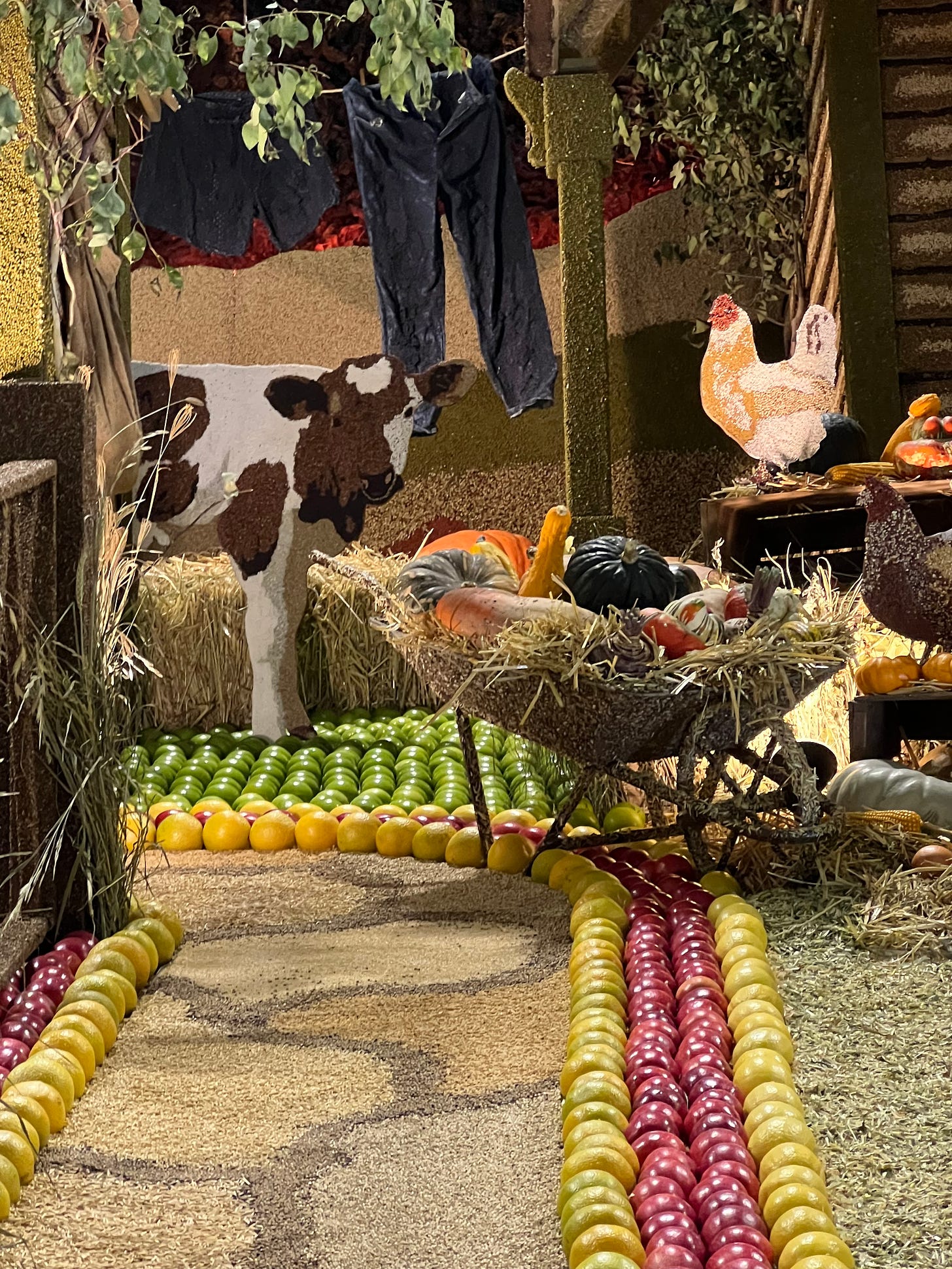
Oh Sally that's so lovely to hear! I'm beginning to think I might need to create some kind of index...and we're only about half a dozen in! But where oh where and how?!! I'll talk more about staking tomatoes when the next season rolls around...I reckon most peeps have stopped growing by now so I'll get in early with tips next season. Yes I have had the fruit tree clippings strike! Once I had a whole row of tiny apricot stakes in flower!! Do visit Great Dixter...not only is the garden glorious, but so many interesting principles are put to the test under the guiding hand of Fergus Garrett. It's very much worth planning for a good day out. And your rhubarb and apple pie sounds positively scrumptious....
I'm glad you enjoyed reading Heather...how we value those moments of stillness. I hope your Easter was a happy one too. xx